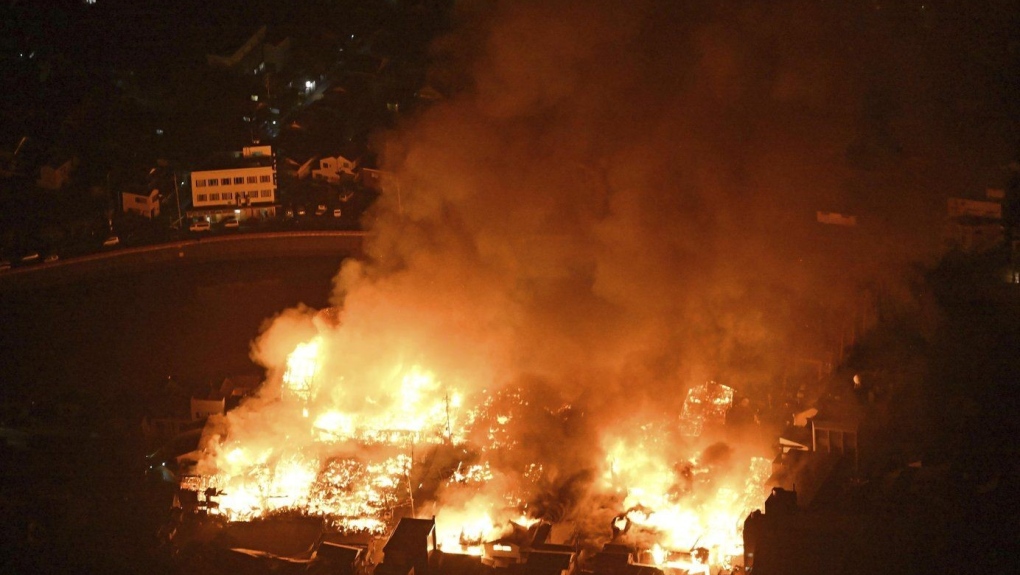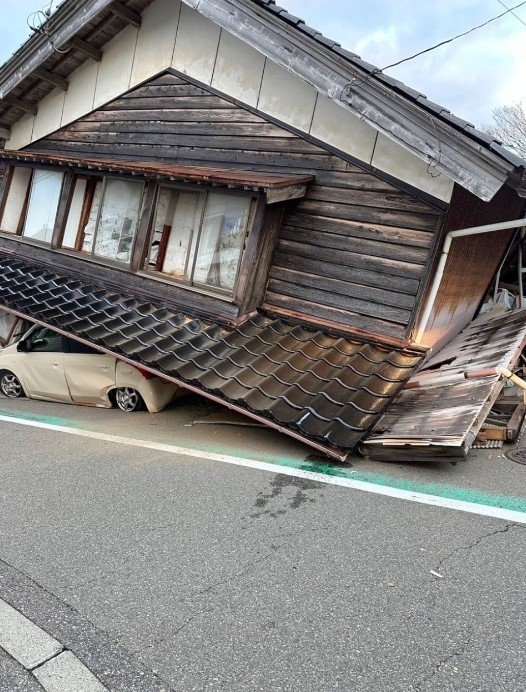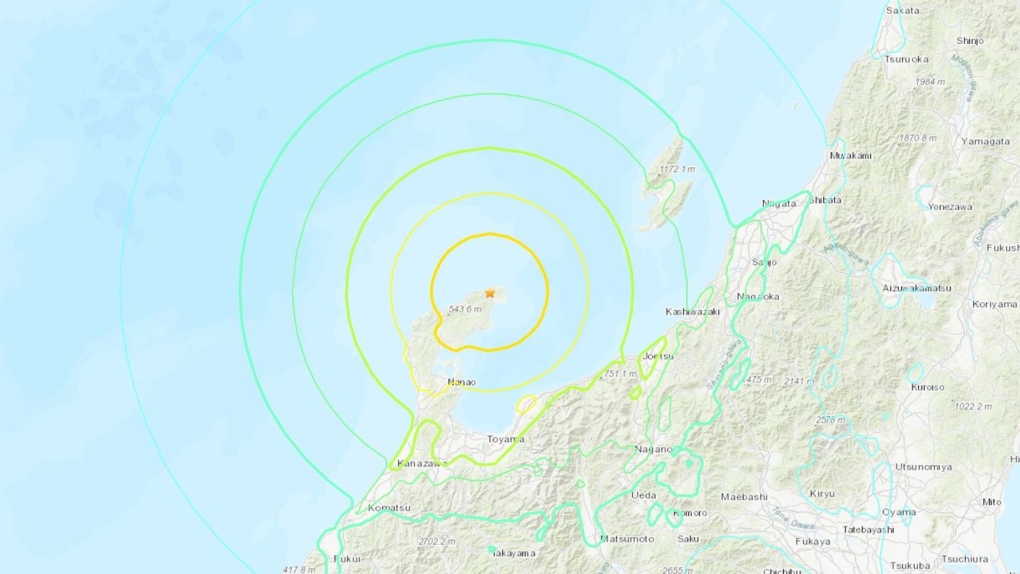TOKYO –
Japan dropped its highest-level tsunami warning after issuing one following a series of large earthquakes on Monday, but told residents in coastal areas not to return home because deadly waves could still arrive.
The earthquakes, the largest of which had a magnitude of 7.6, sparked a fire and collapsed buildings on the western coast of Japan’s main island of Honshu. It was unclear how many people may have been killed or injured.
The Japan Meteorological Agency reported more than a dozen strong earthquakes in the Sea of Japan off the coast of Ishikawa and nearby prefectures that began shortly after 4 p.m. local time.
At least six houses were damaged by the earthquakes and people were trapped inside, government spokesman Yoshimasa Hayashi said. A fire broke out in the city of Wajima, Ishikawa Prefecture, and more than 30,000 homes were left without power, he said.
The weather agency initially issued a major tsunami warning for Ishikawa and lower-level tsunami warnings or advisories for the rest of Honshu’s western coast, as well as the country’s northernmost main island, Hokkaido.
Hayashi stressed that it was essential for people to move away from coastal areas.
“Every minute counts. Please evacuate immediately to a safe area,” he said.
The warning was reduced to a regular tsunami several hours later, meaning the sea could still generate waves of up to 3 meters (10 feet). Aftershocks could also hit the same area in the coming days, the agency said.
Japanese public broadcaster NHK TV initially warned that torrents of water could reach up to 5 meters (16.5 feet). network continued to broadcast warnings Hours later, when aftershocks shook the region.
People returning to get their wallets and other belongings were known to be swept away and drowned even hours after the first evacuation warning. People were evacuated to stadiums, where they will probably have to stay for a few days.

Images from Japanese media showed people running through the streets and red smoke billowing from a fire in a residential neighborhood. Photos showed a crowd of people, including a woman with a baby on her back, standing next to huge cracks that had opened up the pavement.
Some people suffered minor injuries when they tripped and fell while fleeing, or when objects fell from shelves and hit them, according to NHK.
Hayashi said there were no confirmed reports of deaths or injuries from the earthquakes, saying the situation was still unclear. The Japanese military was participating in the rescue efforts, he said.
Bullet trains in the area were suspended, although parts of the service were restored in the afternoon. Parts of a road were also closed and water pipes burst, according to NHK. Some mobile phone services in the region were not working.
The Meteorological Agency said in a nationally broadcast news conference that more major earthquakes could hit the area over the next week, especially in the next two or three days.
According to the agency, more than a dozen strong earthquakes have been detected in the region, with risks of causing landslides and house collapses.
Takashi Wakabayashi, a convenience store worker in Ishikawa Prefecture, said some items had fallen off shelves, but the biggest problem was the huge crowd of people who came to stock up on bottled water, rice balls and bread.
“We have customers at three times the usual level,” he said.

Tsunami warnings were also issued for parts of North Korea and Russia.
The Japanese government has set up a special emergency center to collect information about the earthquakes and tsunami and quickly transmit it to residents to ensure safety, Prime Minister Fumio Kishida told reporters.
US President Joe Biden said in a statement that his administration was in contact with Japanese officials and “ready to provide any necessary assistance to the Japanese people.”

Japan is an extremely earthquake-prone nation, but a tsunami warning of Monday’s magnitude had not been issued since a large earthquake and tsunami triggered meltdowns at a nuclear plant in March 2011.
Government spokesman Hayashi told reporters that nuclear plants in the affected area did not report any irregularities on Monday. Nuclear regulators said no increases in radiation levels were detected at monitoring posts in the region.

——
Hyung-jin Kim in Seoul, Katie Davies in London and Lorian Belanger in Bangkok contributed.
Downloadて水止まらんし小松イオン地獄状態です pic.twitter.com/kac5RWgpJN
-せーや (@_tikuwa_1) January 1, 2024
